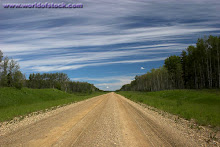 NORDAUSTLANDET,-Sekilas gletser itu seperti gletser lain di kutub utara yang beku. Namun dalam pengamatan lebih dekat, sebuah wajah pedih terlukis pada dinding es yang meleleh, yang tampak tengah menangis dan mengalirkan sungai air mata.
NORDAUSTLANDET,-Sekilas gletser itu seperti gletser lain di kutub utara yang beku. Namun dalam pengamatan lebih dekat, sebuah wajah pedih terlukis pada dinding es yang meleleh, yang tampak tengah menangis dan mengalirkan sungai air mata.(dari gambar disamping memperlihatkan Citra pada lapisan es yang mencair di Norwegia seperti sosok yang tengah menangis)
Citra "Ibu Bumi' yang sedang sedih terlihat oleh penduduk setempat selama proses pencairan, dengan es yang meleleh dan salju jatuh ke laut di bawahnya.
Gambar menarik pada lapisan es Austfonna yang terletak di Nordaustlandet di Kepulauan Svalbard, Norwegia itu hampir pasti akan digunakan para aktivis lingkungan untuk melakukan protes terkait perubahan iklim. Kenaikan muka laut yang disebabkan es yang meleleh merupakan salah satu kekuatiran utama dari dampak pemanasan global. Para ahli telah mengingatkan bahwa negara-negara yang berada di dataran rendah akan berada di bawah permukaan air.
Gambar Ibu Bumi yang menangis itu diambil seorang fotografer angkatan laut dan dosen lingkungan hidup Michael Nolan dalam sebuah pelayaran tahunan untuk mengamati gletser tersebut dan kehidupan liar di sekitarnya.
Jon Ove Hagen, seorang ahli gletser yang juga anggota Jawatan Monitoring Gletser Dunia (World Glacier Monitoring Service/WGMS) dan profesor geosains di Universitas Oslo, Norwegia, telah memberikan konfirmasi bahwa lapisan es yang memberi citra Ibu Bumi yang 'menangis' itu terus menerus menyusut sebanyak 160 kaki setiap tahun selama beberapa dekade. Hagen telah mempelajari lapisan es Austfonna sejak tahun 1988.
Austfonna merupakan kawasan lapisan es terbesar di Norwegia, tepatnya di Pulau Nordaustlandet di Kepulauan Svalbard. Menurut Hagen (59), Austfonna memiliki luas sekitar 3.000 mil persegi dan sejauh ini merupakan lapisan es terbesar di Svalbard dan salah satu yang terbesar di Arctic.
Ia menjelaskan, penyusutan permukaan gletser di Austfonna dalam 12 tahun rata-rata mencapai 160 kaki per tahun. Geometri kawasan es itu, katanya, sedang berubah. Bagian depannya terus mundur, bagian bawahnya menjadi lebih tipis, dengan tingkat penipisan tiga kaki per tahun, sementara bagian dalamnya menebal sekitar 1,6 kaki per tahun. Lapisan itu, kata Hagen, berkurang sekitar 1,6 kubik mil es setiap tahun.
Austfonna merupakan area lapisan es terbesar kedua di Eropa setelah Vatnajvkull di Islandia dan tergolong ketujuh tersebesar di dunia.




